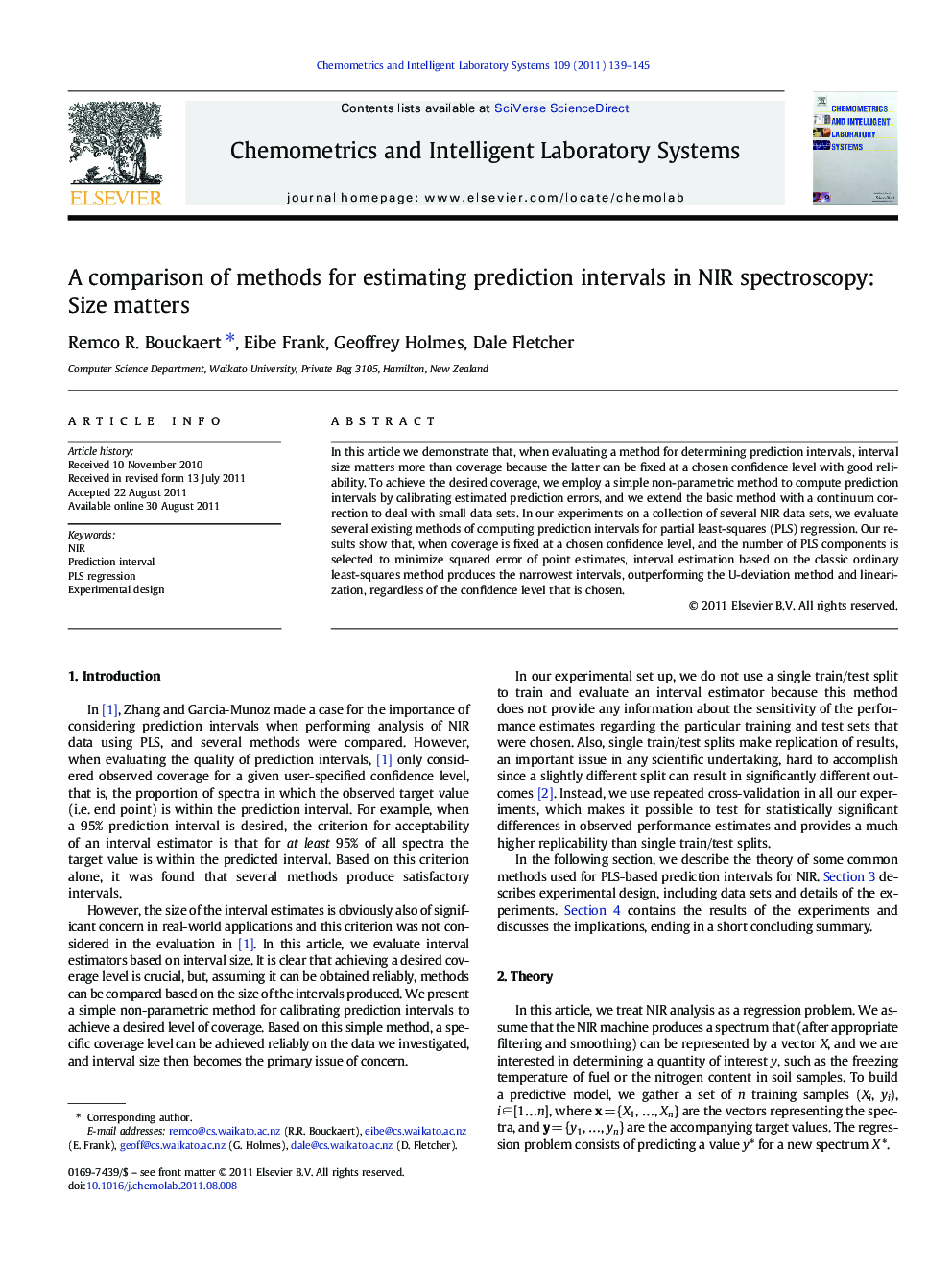| Article ID | Journal | Published Year | Pages | File Type |
|---|---|---|---|---|
| 1179799 | Chemometrics and Intelligent Laboratory Systems | 2011 | 7 Pages |
In this article we demonstrate that, when evaluating a method for determining prediction intervals, interval size matters more than coverage because the latter can be fixed at a chosen confidence level with good reliability. To achieve the desired coverage, we employ a simple non-parametric method to compute prediction intervals by calibrating estimated prediction errors, and we extend the basic method with a continuum correction to deal with small data sets. In our experiments on a collection of several NIR data sets, we evaluate several existing methods of computing prediction intervals for partial least-squares (PLS) regression. Our results show that, when coverage is fixed at a chosen confidence level, and the number of PLS components is selected to minimize squared error of point estimates, interval estimation based on the classic ordinary least-squares method produces the narrowest intervals, outperforming the U-deviation method and linearization, regardless of the confidence level that is chosen.
► Evaluation of interval size for PLS-based prediction interval estimators. ► Non-parametric method for rescaling intervals to achieve desired coverage. ► Large-scale evaluation using range of datasets and repeated cross-validation.
